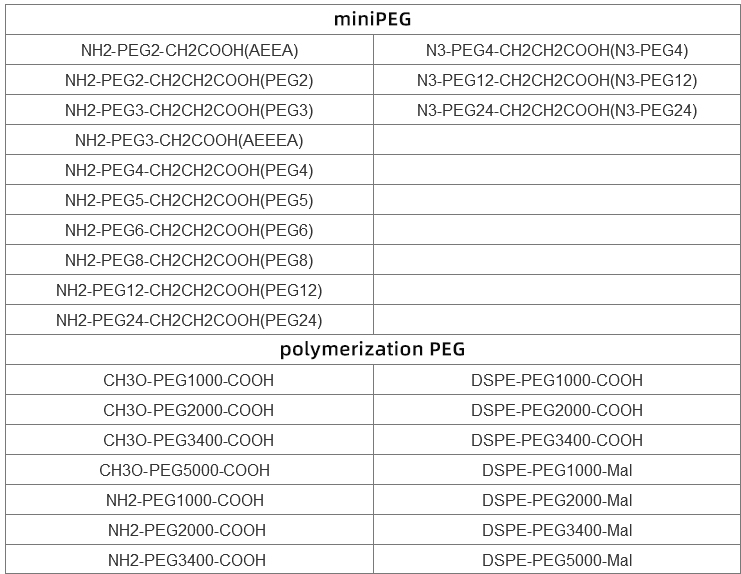PEG (polyethylene glycol)
PEG (polyethylene glycol) can enhance the solubility of hydrophobic drugs, proteins, nucleic acids, liposomes, improve the stability and prolong the cycle time, has become the focus of biotechnology and biomedical circles, widely used in the connection of macromolecules and surfaces, targeting of drugs and liposomes, nanoparticle functionalization and many other fields.
When choosing PEG, there are four aspects to consider:
function
· Single functional group PEG: contains a chemically reactive terminal, which can be used for pePEG, nanomaterial modification and modification;
· Difunctional group PEG: Contains two reactive ends, including homologous difunctional group PEG (two reactive ends are the same) and heterologous difunctional group PEG (two reactive ends are different), for conjugating and cross-linking.
PEG structure
· Linear PEG is commonly used for PEG and cross-linking in drug delivery systems;
· Multi-arm PEG (4-arm, 8-arm) can prepare hydrogels and stents for drug delivery.
Reactivity of
· Covalent conjugate: PEGs with reactive end groups, such as -NHS, -SH, or -COOH groups, can be covalent conjugated with corresponding functional groups;
· Polymerization: PEG whose end group is Acrylate (Acrylate) can be polymerized by photopolymerization reaction.
Molecular weight
· Pegylation: PEG of higher molecular weight (≥ 5 kDa) is used for conjugation with lower molecular weight drugs. Lower molecular weight PEG (≤ 5 kDa) is used to peg-bind proteins and peptides.
· Preparation of hydrogels: Usually high molecular weight PEG (≥ 5 kDa) is used.
Common PEG modification



 Contact Us
Contact Us
 Return
Return